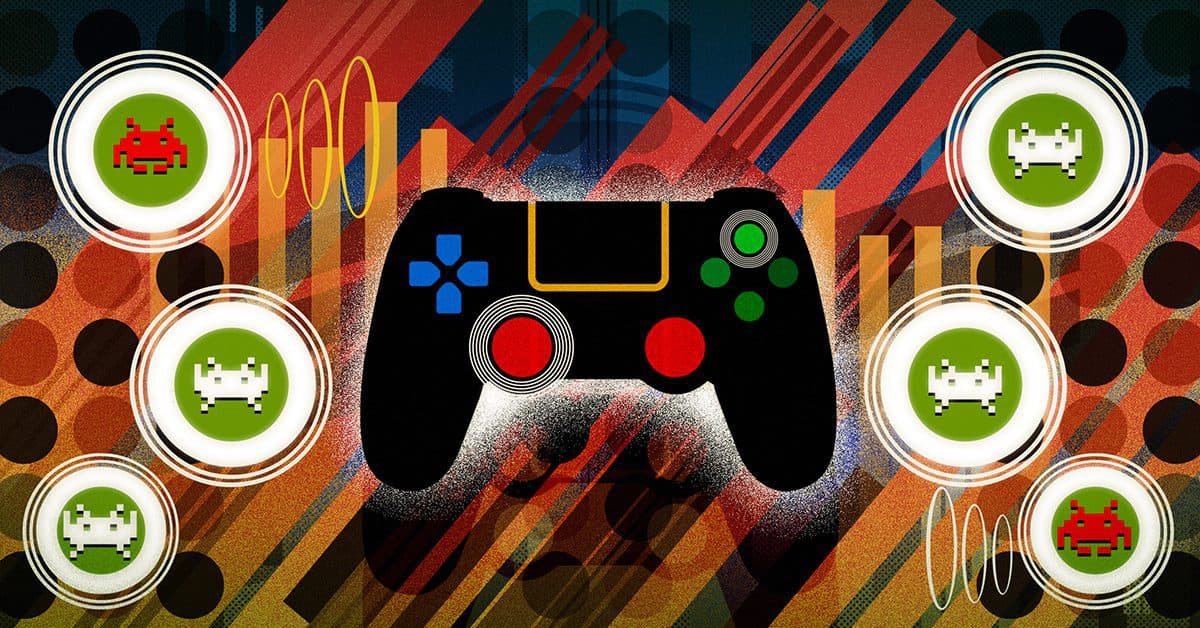Online Communities to Digital Nations: How Gaming Guilds Combine Startups, VCs and Social Impact
The gaming guild phenomenon has evolved far beyond online communities of gamers

Blockworks exclusive Art by Axel rangel
key takeaways
- The play-and-earn model, popularized by Axie Infinity, has revolutionized gaming guilds by monetizing the gaming community
- Although it is still in its infancy, the play-and-earn model is also poised to take off in esports
Education platforms, community development, crypto crowdfunding and more. The gaming guild phenomenon has evolved far beyond online communities of gamers. These guilds are rapidly becoming digital nations.
Gaming guilds: what they are and how they work
Traditionally, a gaming guild is a collection of gamers who like to play together, compete against other guilds and share gaming tips. The play-and-earn model, popularized by Axie Infinity, has revolutionized gaming guilds by monetizing the gaming community. Instead of joining a guild purely for entertainment, players sign up to master their craft and build revenue streams.
Like any disruptive industry, the entry point to the play-and-earn gaming model is getting increasingly expensive. In the case of Axie Infinity, a newcomer must purchase and hold a minimum of three Axie characters before they can play the game. The average price of an NFT on Axie Infinity was $355 late last year.
Guilds such as UniX Gaming recognize that most players live in developing countries where the average monthly salary is $150 to $250. Many argue that for the industry to continue its expansion, it needs to lower the cost barrier.
UniX helps by offering scholarships for newcomers. They operate under a DAO (decentralized autonomous organization) structure, so scholarship funding comes from within the community of DAO token holders. They collectively invest in the gaming NFTs needed to participate and lend to the scholars. Once scholars earn rewards with these NFTs, they split earnings between the player and the guild. In this way, the guild makes a return on its original investment in digital game assets.
How gaming guilds are more than a cost solution
The DAO model of gaming guilds first emerged primarily as a solution to the play-and-earn entry barrier. However, the rapid growth of these DAOs is creating new opportunities and innovations in the gaming metaverse industry.
UniX Gaming, one of the largest gaming guilds in the play-and-earn space, is a great example. Through its scholarship program, it provides a 50/50 profit share. Over several months, the gaming guild has amassed 1,000 scholars just for Axie Infinity and 5,000 across more than 50 games.
UniX has expanded the scholarship program to include its learn-and-earn education platform. This investment both attracts more scholars and increases player performance. Consequently, it’s reporting a higher than average matchmaking rating (MMR) per scholar (in-game skill level) by comparison with other guilds, resulting in higher earnings.
Social impact
Gaming guilds are quickly discovering that they have great potential for social impact. UniX found that most of its users joined without previous crypto experience. So it sought to include topics like the metaverse, security, NFTs, crypto, and even English, math, science, cooking, and biology in its education platform.
Players share rewards from UniX gaming activities with UniX governance token holders. Their goal is to grow the DAO through an expansive gaming ecosystem. Not only will players share rewards for playing and learning, but investors and builders will be able to fund and launch new games through UniX’s decentralized launchpad called Final Round. This model combines traditional venture capital fundraising with open source development — all for and through the community members.
Axie Infinity was the spark that lit the fuse in blockchain-based gaming. It was developed in Vietnam and took off across the Philippines. With that as a backdrop, we shouldn’t underestimate the social impact blockchain-based gaming and gaming guilds could have throughout the world.
Blockchain gaming and esports
Although it is still in its infancy, the play-and-earn model is also poised to take off in esports. Since these new game economies are moving from a participation model to a competitive one, it will likely attract more esports media attention. Many speculate that exposure to the 2025 projected $2.89 billion esports market capitalization will increase interest from institutional and retail investors.
Crowdsourcing, funding, skills and community
Because DAOs envelope gaming guilds, they provide a mechanism to crowdfund and crowdsource new projects. VCs are involved in this space, but the bulk of the investment comes from the community of investors, gamers and managers — all participants within the guild or DAO. Investors benefit from guild research in finding the best projects. As UniX founder and CEO Mirko Basil told Blockworks recently, “gaming is not only playing; It’s owning, building, sharing, chatting, and more.”
The community can also allocate DAO-controlled capital to fund skills such as developer resources. Santiago Santos, an investor who focuses on the NTF/gaming space, goes so far as to predict that gaming guilds will create more employment than any other sector.
UniX emphasizes community in its vision for a growing UniXverse. It intends to introduce a chat function to enable casual conversations between users and the exchange of private information. Additionally, it is developing new user groups for NFT fans, artists and developers.
There is no doubt that gaming guilds are in their early innings. But through monetizing the gaming community, these guilds now have many features similar to a modern-day nation. From governance structures and funding mechanisms to scholarship programs and community management, it is an exciting time for players and developers.
Get the news in your inbox. Explore Blockworks newsletters:
- The Breakdown: Decoding crypto and the markets. Daily.
- Empire: Crypto news and analysis to start your day.
- Forward Guidance: The intersection of crypto, macro and policy.
- 0xResearch: Alpha directly in your inbox.
- Lightspeed: All things Solana.
- The Drop: Apps, games, memes and more.
- Supply Shock: Bitcoin, bitcoin, bitcoin.





